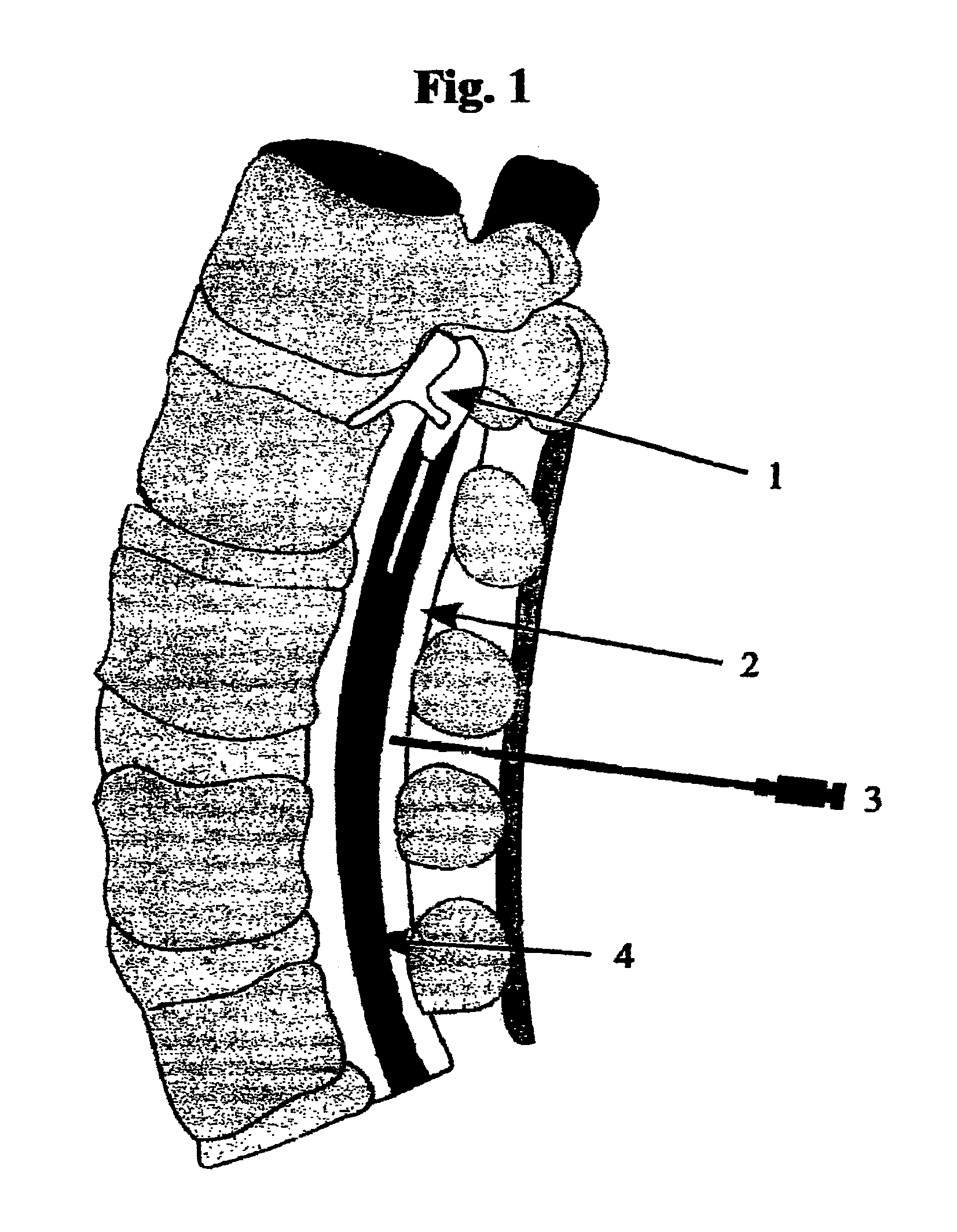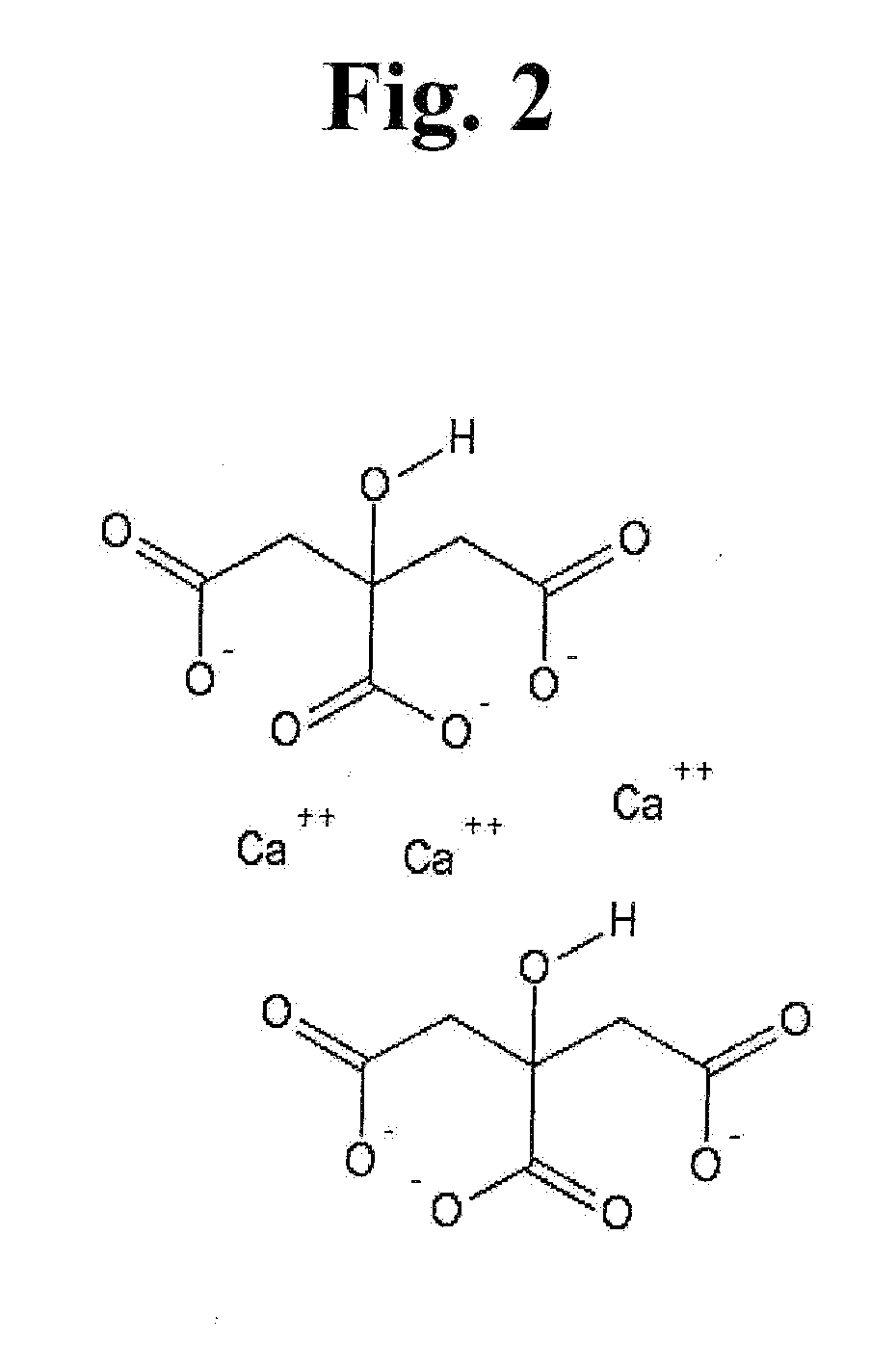Citrate resorption of bone as a treatment for spinal stenosis
- Summary
- Abstract
- Description
- Claims
- Application Information
AI Technical Summary
Benefits of technology
Problems solved by technology
Method used
Image
Examples
Embodiment Construction
[0011]Spinal stenosis caused by spondylosis is a common debilitating condition that produces pain, weakness and rarely autonomic dysfunction of the bladder and bowel. An isotonic solution of citrate in the form of sodium citrate or sodium citrate / citric acid buffer can resorb bone at 37° C. at neutral pH. In vitro the chemical reaction is non-enzymatic, spontaneous and occurs at a rate that can be easily observed in one week or less. Infusion of citrate via an epidural catheter will resorb spondylitic bone that produces central, foraminal and / or lateral recess spinal stenosis without disrupting the ligamentum flavum or dura mater.
[0012]Insertion of an epidural catheter and subsequent infusion into the epidural space is a common low risk medical procedure. (FIG. 1) This procedure can be performed successfully with or without guided imaging.
[0013]In vitro experiments definitively show that bovine vertebral bone resorption occurs spontaneously without a catalyst in an isotonic solution...
PUM
| Property | Measurement | Unit |
|---|---|---|
| Time | aaaaa | aaaaa |
| Volumetric flow rate | aaaaa | aaaaa |
| Molar density | aaaaa | aaaaa |
Abstract
Description
Claims
Application Information
 Login to View More
Login to View More - R&D
- Intellectual Property
- Life Sciences
- Materials
- Tech Scout
- Unparalleled Data Quality
- Higher Quality Content
- 60% Fewer Hallucinations
Browse by: Latest US Patents, China's latest patents, Technical Efficacy Thesaurus, Application Domain, Technology Topic, Popular Technical Reports.
© 2025 PatSnap. All rights reserved.Legal|Privacy policy|Modern Slavery Act Transparency Statement|Sitemap|About US| Contact US: help@patsnap.com


